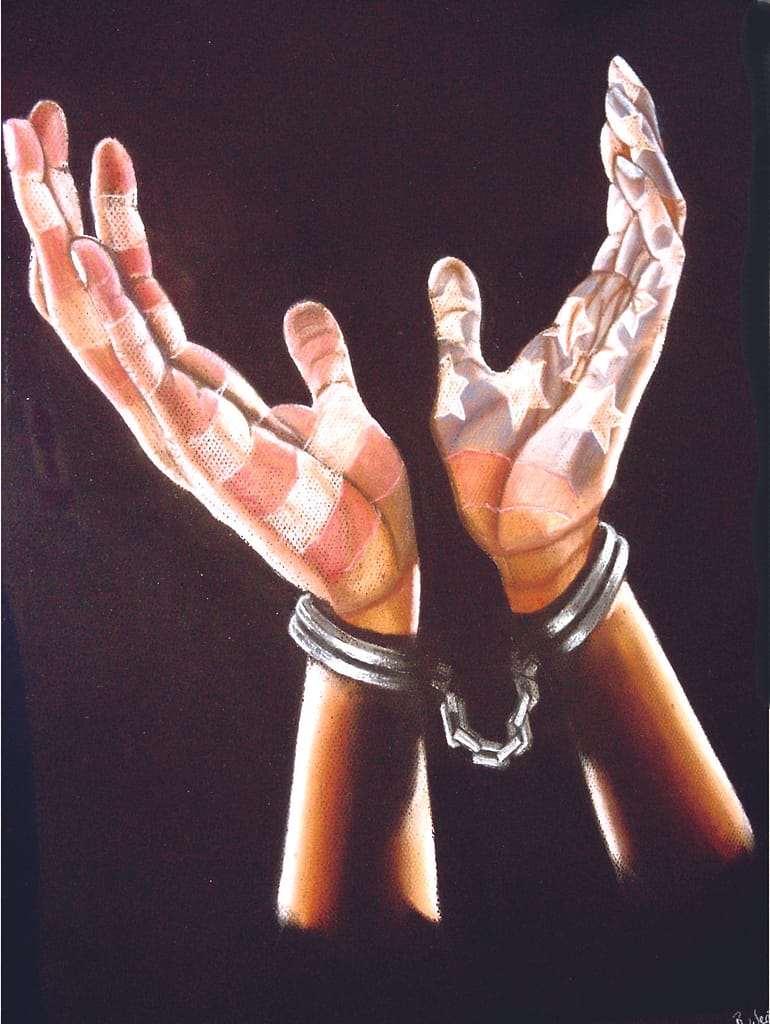Around the planet, governments confront illegal activity and social unrest in a myriad of disparate fashions. The astonishing crime surge in the United States was preventable. Progressive policymakers emulating the synonymous reckless revolving-door policies during the 1960s and ‘70s consciously produced the most substantial deluge of violent crime in history through incarcerating Americans at globally unprecedented rates. We were able to reverse that aforementioned crime wave with the tough anticrime measures instituted during the Reagan-Bush era. Thus, we, in theory, can stop this one. Studies continually demonstrate that the most predatory crime is committed by a small, hard-core group of habitual offenders. These individuals constitute a miniscule fraction of the population, yet are responsible for about half and two-thirds of predatory violent crime. Each of these offenders can be anticipated to, at times, carry out hundreds of crimes a year, typically while on bail, probation or parole. Not only does the United States have the highest incarceration rate on the planet; ostensibly every single U.S. state incarcerates more people per capita than any other independent democracy on earth. What does that tell us? The United States relies too heavily on prisons and jails to mitigate the ramifications of crime.
Throughout the nation, judges, prosecutors, and parole boards are bequeathed algorithms to equip them with the adequate tools to make life-altering decisions about the freedom of the people put before them, based by and large on appraised risks to “public safety.” Generally, the coupling between an underfunded public defense and no right to counsel in others materializes in an unfavorable system. In a recent peer-reviewed study, the ACLU and associates at Carnegie Mellon and the University of Pennsylvania deliberated over a simple question: Can one predict the risk of the criminal justice system to the people accused by it, instead of the risks posed by the people themselves? The answer, heavily pontificated, appeared to be yes. The creation process of such a tool helps establish a comprehensive scope of issues as it collides with existing risk assessment tools. The criminal legal system appears to unleash a gamut of risks to those involved, extending to respective families and communities, and wield long-term developments such as difficulty obtaining housing or employment.
Imagine day after day, year after year, having no space to deem your own, no bodily autonomy over who to spend time with, what to eat, or where to go. Separated from family and friends. Love and affection are a rarity. Prisoners are forced to alter and adapt in order to survive in such an unfathomable environment. Social psychologist Craig Haney (who collaborated with Philip Zimbardo on the prolific Stanford Prison Experiment) delved into the psychological repercussions of imprisonment and bluntly stated that “there are few people who are completely unchanged or unscathed by the [prison] experience.” Even further, researchers at the University of Cambridge claim that long-term imprisonment “changes people to the core.” The outpouring of research across the world has resulted in overwhelming international interest in how to improve prisons. The key distinction between “violent” and “nonviolent” crime generally seems unhelpful given the fact that the terms are not well outlined. Yet, the differentiation is typically used to substantiate the deterioration of meticulously crafted policy modifications by categorically excluding a large portion of people that they affect.

Journalists in contemporary times function as a driving mechanism for change within our legal system. As the journalism sector endeavors to discover and shape its futuristic landscape, news outlets are responsible for maintaining their quintessence and relevance by granting citizens the capacity to make informed choices about their democracy. Ostensibly, democracy is at the core of journalistic integrity. Journalism equips society’s constituents with the aptitude to have their voices heard and allows us to investigate the sources of power that help form our lives. Over the past few decades, the role of a journalist in a free and open society has become increasingly critical as a result of technological advancements that unquestionably yield drawbacks. These aforementioned downsides pivot around the notion of indeterminate information that is altering the intended audience from a passive to an active stance. We are truly consumers of information with the ability to decide which source we choose to believe and whether to further disseminate that content. The newly established realm of cyberspace has deconstructed the virtue journalism has previously held and manifested into a means of controlling the general public’s behavior and thoughts. Media monopolies have been destroyed by the Internet, liberating restrained audiences to elect their own preferences with little interest left in nonpartisanship. Thus, it is extraordinarily vital for both the consumer and producer to take on their respective roles with the highest degree of righteousness.
Free press is the heart of equitable development and shouldn’t ever be viewed as a splendor. Unfortunately, journalists must accept that their target audience is inundated with undifferentiated information with little to no means of ascertaining what is true or what is propaganda. That being said, journalists must thoroughly check and verify the information they are putting out. Without the consumer’s trust, journalism cannot survive in society which is why it is exceedingly imperative to be as transparent as possible. One must tell the reader their biases, what they know and what they don’t, who his or her sources are. Transparency nourishes open-mindedness which guides a person to better understand the perspective of others that may or may not be synonymous to their own.

Cultural competency is a key aspect of journalism that both novel and seasoned journalists venture to harness . The approach journalists take when covering matters that involve another community is paramount. A journalist must delve into the subject matter in a genuine fashion that unleashes fervor and curiosity that leads to greater knowledge about a different community of people. It is inexplicably inescapable to live in a homogeneous world. Multiplicity is an inherent exposition. All humanity can do is learn about another’s culture through the adherence of acceptance and willingness to be in contact with the wide array of people inhabiting our earth. That, precisely, is the job of a legitimate journalist. Real journalists go out and seek those who are underrepresented and help these people have their expressions heard and chronicled. Not only is it fundamental to incorporate diverse voices and inclusive significations in an article, maintaining diversity in the newsroom is indispensable for the longevity of any journalistic platform. The world is becoming more and more diverse and it is a publication’s job to reflect this veracity–failure to do so can ensue obsoleteness. Diversity has also metamorphosed in nuanced and complex forms. There are most definitely micro-audiences out there that we need to better understand and serve. Investigative journalist Ida B. Wells once said, “the way to right wrongs is to turn the light of truth upon them.” Journalistic efforts in the pursuit of bringing forth real change is the driving force behind reaching underrepresented groups.
Reflection and introspection are prerequisites to growth in any realm of life. The consolidation of information is crucial in journalism for engendering change within our legal systems for a multitude of reasons. Finding the underlying objective of a story is one those aforenamed motives. Unearthing the real story is a hallmark of journalism and involves conceiving a clear focus that directs the reader throughout the piece. Learning to sift through all the material provided through interviews and research is a skill that journalists must possess in order to establish a comprehensible focal point. The abstraction of objectivity is a testament to a journalist’s honor in the industry and has become a consistent approach taken so that personal and cultural biases do not undermine the accuracy of his or her work. Objectivity should be a main consideration of the decision making process.


